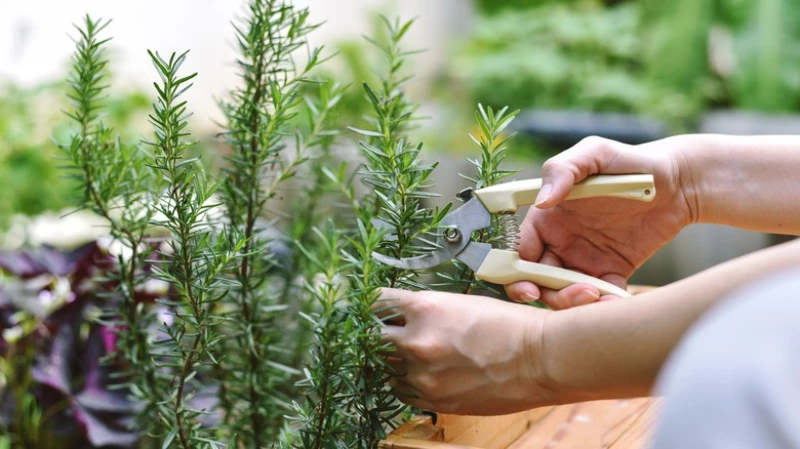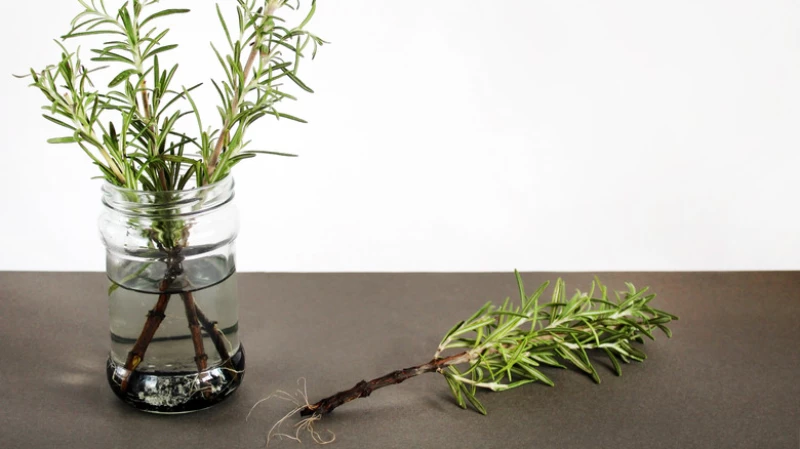Rosemary, a popular perennial herb in gardens, originates from the Mediterranean region of Europe. It flourishes in sunny locations with mild temperatures and well-draining soil. While it is commonly grown in containers, it is advisable to bring them indoors during the winter in colder climates. Propagating rosemary from cuttings is a simple process that can be done in various ways.
Although rosemary thrives in moderate climates, it is a resilient plant that can survive for many years in a container. Propagating it from cuttings is an excellent method to cultivate your own rosemary plants in containers or garden beds. When propagating, it is best to use cuttings from the young, green stems of the plant as they root faster. While it is possible to use woody stem cuttings for propagation, it may take longer and have a lower success rate.
To propagate rosemary cuttings in water, you don't need very long cuttings; 3 or 4 inches is enough. If possible, the cuttings should be taken below a leaf node on the stem and at a 45-degree angle, which allows for maximum uptake of water and nutrients to help stimulate growth. If you can't start to propagate right away, keep the cuttings loosely wrapped in a barely moistened paper towel. In the meantime, we'll go over the next steps so you can multiply your rosemary totally for free.
Propagate rosemary cuttings in water
Rosemary propagates very well from cuttings placed in water. This method allows for strong root systems to become established prior to planting in a container or your garden. Before placing in water, you must strip the leaves from the stem at the base of the cutting. The leaves should not be immersed in the water as this may interfere with root formation.
Once you strip the leaves, simply place the cut end of the rosemary stem into a clean glass of water. If using tap water, allow it to sit out for an hour before using it for chlorine and other chemicals to dissipate. Change out the water every few days or as it gets cloudy. Be patient, as it takes a bit of time for the roots to show. Within three to four weeks, you should see long white roots forming on the base of the cutting. Then, the cutting can be planted in a container with a potting medium.
Although rosemary can be propagated successfully in water, it's not a good idea to try and grow it in water for the long term. Because it does well forming roots in water, there is a misguided belief that rosemary can and should be grown hydroponically (without soil). However, a mature rosemary plant's woody stem and roots would be vulnerable to rot if left in water, so planting in soil is the best way to allow your rosemary plant to grow and thrive.
Rooting rosemary cuttings in soil
You can also propagate rosemary cuttings by placing them directly into the soil. However, first, you must treat the cut end with a substance that will stimulate root growth. Many people use standard rooting hormone powder to propagate cuttings. As with using water, prepare the cutting by stripping the leaves from the base of the stem. Leave an inch of leafless stem to go below the soil surface. Use a fresh, lightweight potting mix, and add a bit of sand if desired.
Dip the end of the rosemary cutting in rooting hormone powder, or try using powdered cinnamon as rooting hormone powder instead. Place the stem carefully into the soil-filled container (or planting tray if you're propagating multiple cuttings). You can also add some plant starter (Pennington offers theirs on Amazon for about $10), but this is optional and may not be necessary. Place your pots or tray in bright but indirect sunlight. Water lightly using a spray mister daily to keep the soil moist but not wet. After two to three weeks, tug lightly on the cutting to see if roots have started to form.
Instead of using rooting hormone powder, consider using honey as a natural alternative. Opt for unpasteurized honey for best results. Simply dip the cut end of your plant cutting into the honey, allowing any excess to drip off before planting the stem. Similar to using powder, this method typically takes two to three weeks for roots to start forming.









